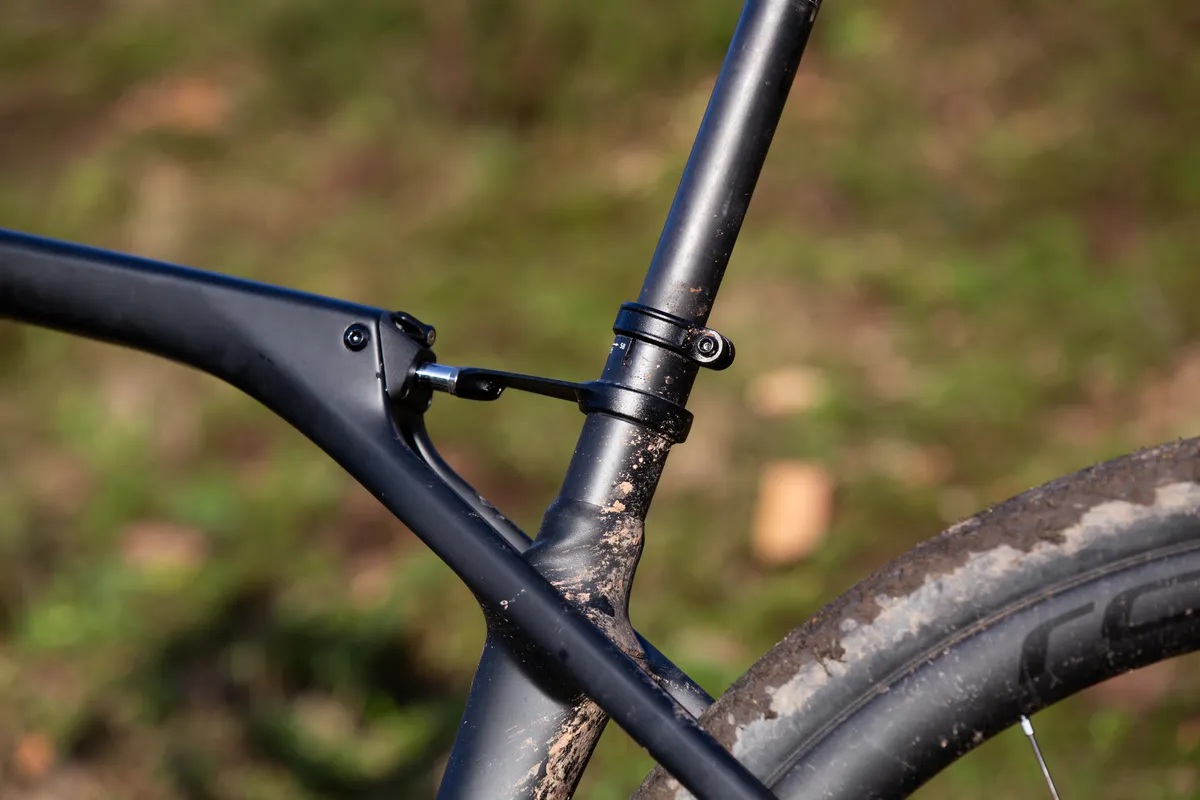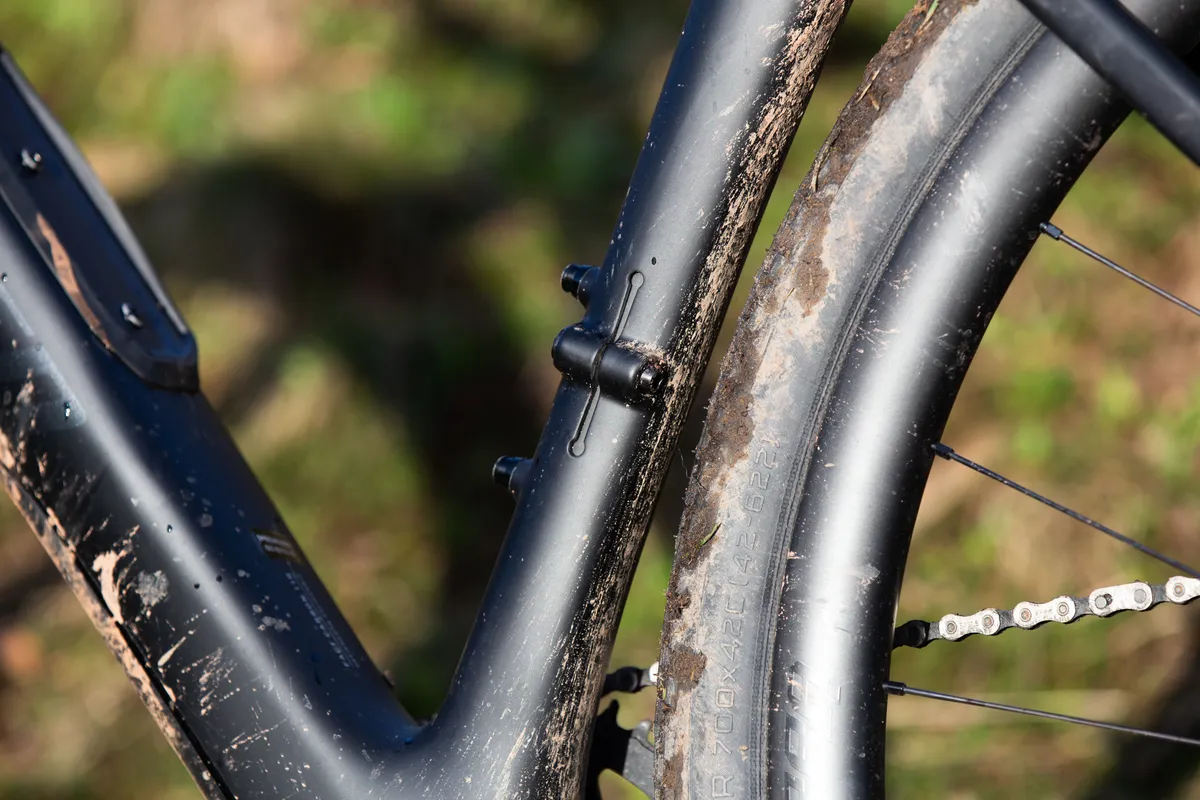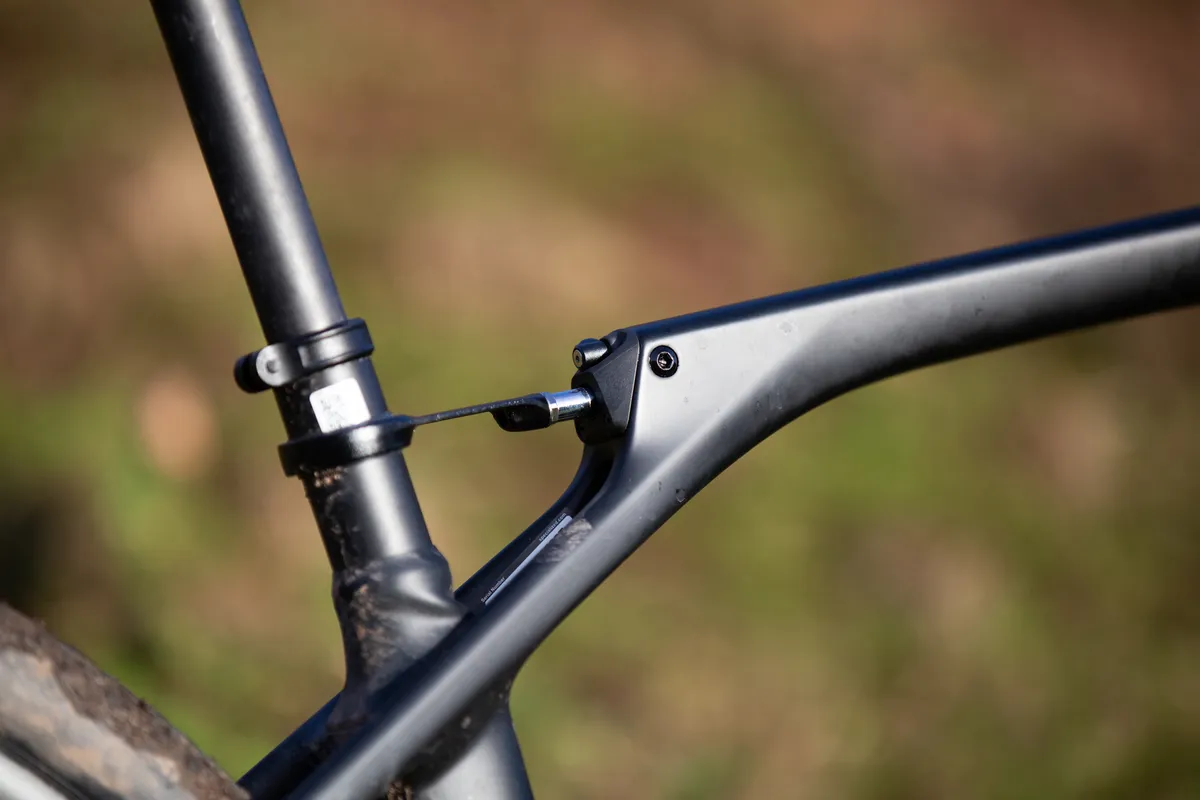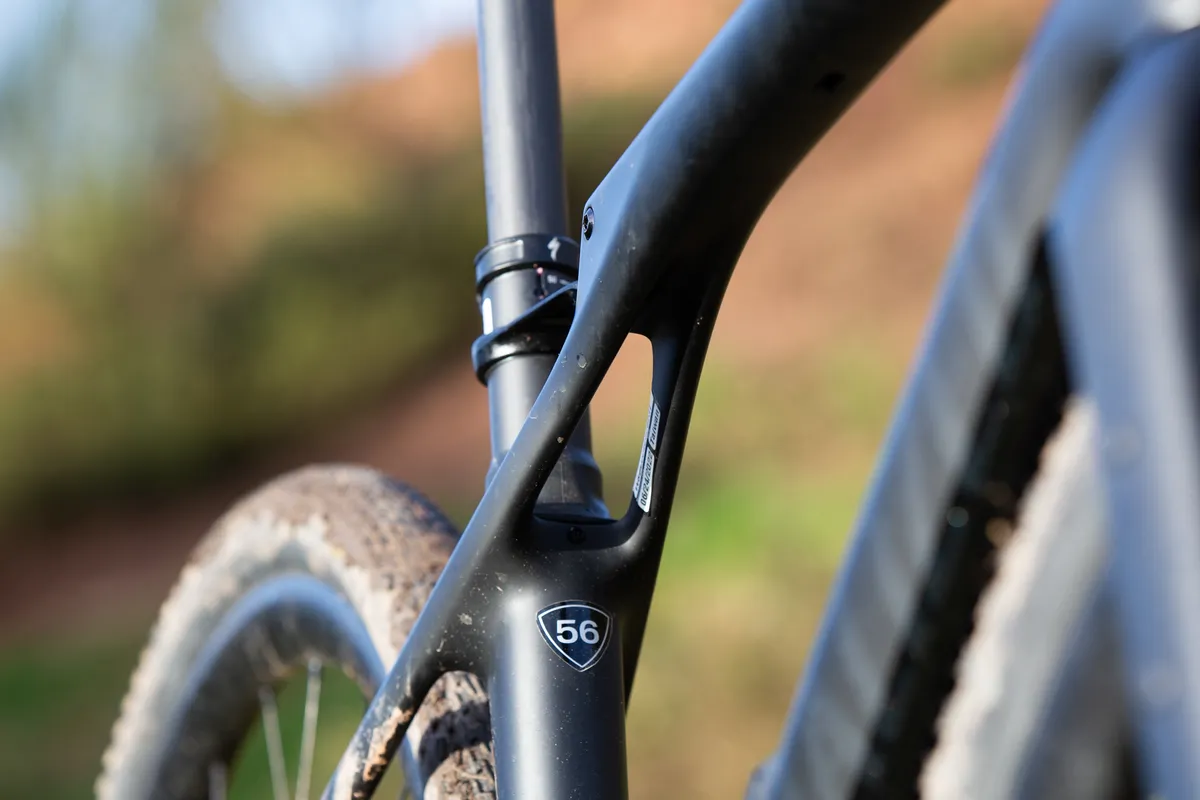The Specialized Diverge STR retains the excellent ride quality and impressive versatility of the previous-generation bike, adding a rear ‘suspension’ system that, while divisive, is genuinely effective.
Setting up the Future Shock Rear system is a slightly fiddly and involved process but, once dialled in, it offers a smooth gravel riding experience unlike anything else.
Some will baulk at the complexity of the system and, while it performs perfectly, this base model’s build isn’t competitive for the price.
That aside, the Diverge STR is a hugely versatile and comfortable gravel bike that will be equally at home cosseting the delicate rear of bike path trundlers or spicy go-fast gravel racers.
What is the Specialized Diverge STR?
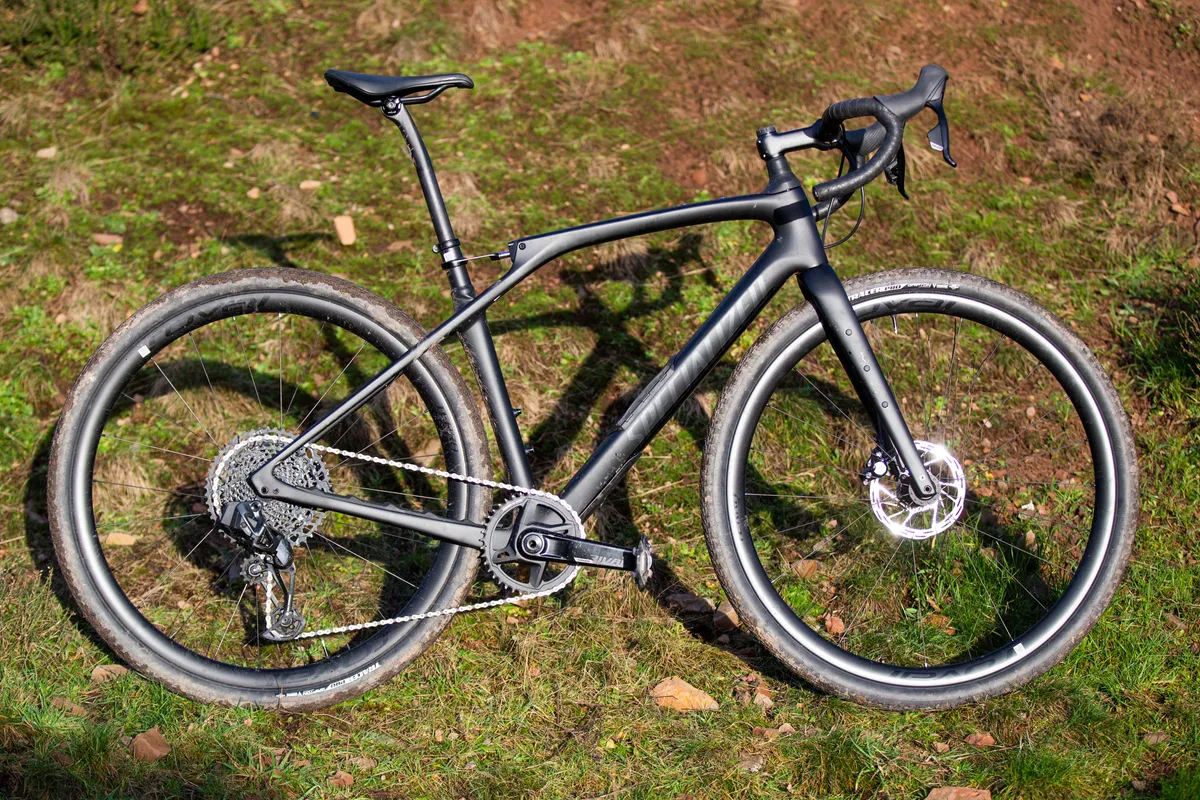
The Future Shock is a small suspension system that sits between the stem and head tube, improving comfort by suspending the rider’s hands.
Specialized first introduced the Future Shock with the Bike of the Year-winning 2016 Roubaix. It then ported the tech over to the Diverge gravel bike in 2017
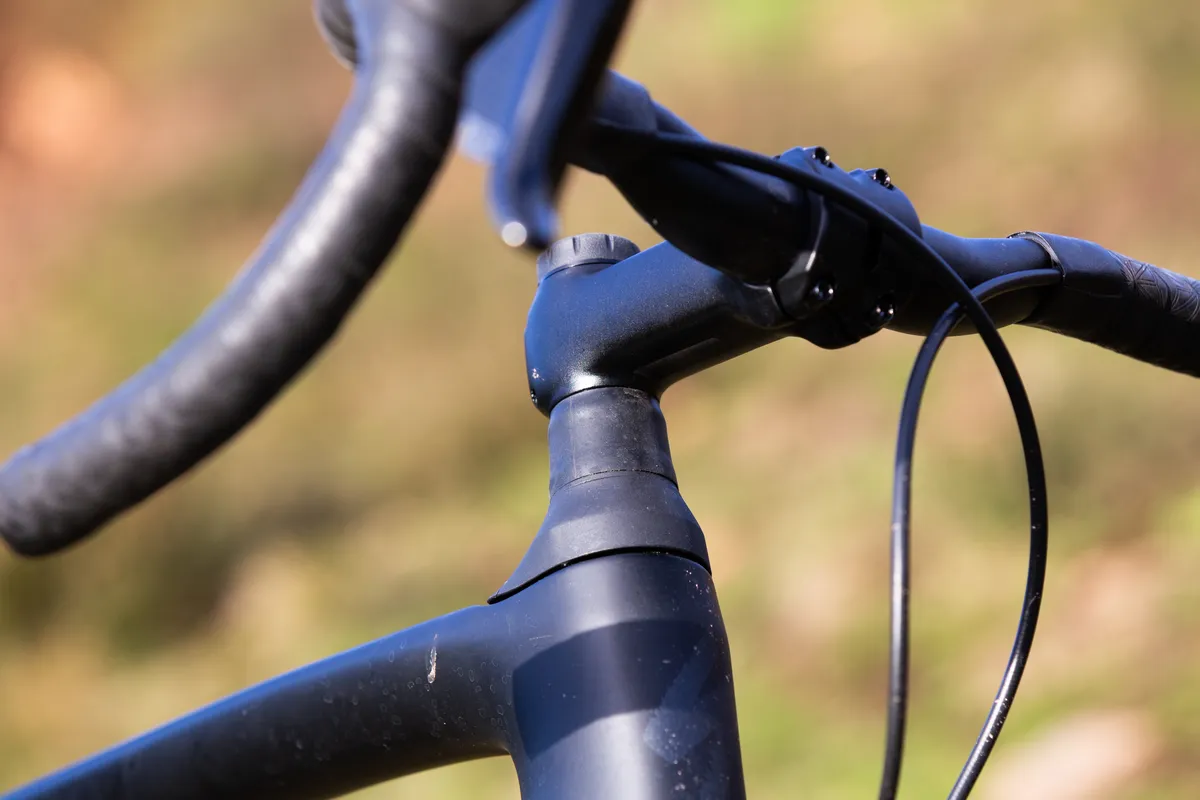
I was initially sceptical about Specialized's claims regarding the system, but was won over after riding the last two generations of the Diverge. It really is very good at reducing fatigue and, in certain scenarios, improving control, winning plaudits among many testers.
The Diverge STR introduces Future Shock Rear. As the name implies, this is a suspension system designed to suspend the rider's backside, improving comfort.
Brands build rear-end compliance into gravel bikes through a variety of means. Dropping the top tube to expose a large amount of seatpost that can easily flex is the simplest way to accomplish this.
The STR takes this concept to the extreme, essentially turning the whole seat tube into an extended flexible seatpost.
With Future Shock Rear, a conventional seatpost slots into a flexible ‘frame post’. This is clamped low down on the frame and is designed to provide up to 30mm of rearward flex.
This, in turn, is connected to a hydraulic damper integrated into the top tube. This controls the rebound and compression of the system.
That’s only a brief overview of a moderately complex bit of tech – head to our original news overview for an in-depth look at how it works.
Specialized Diverge STR spec overview
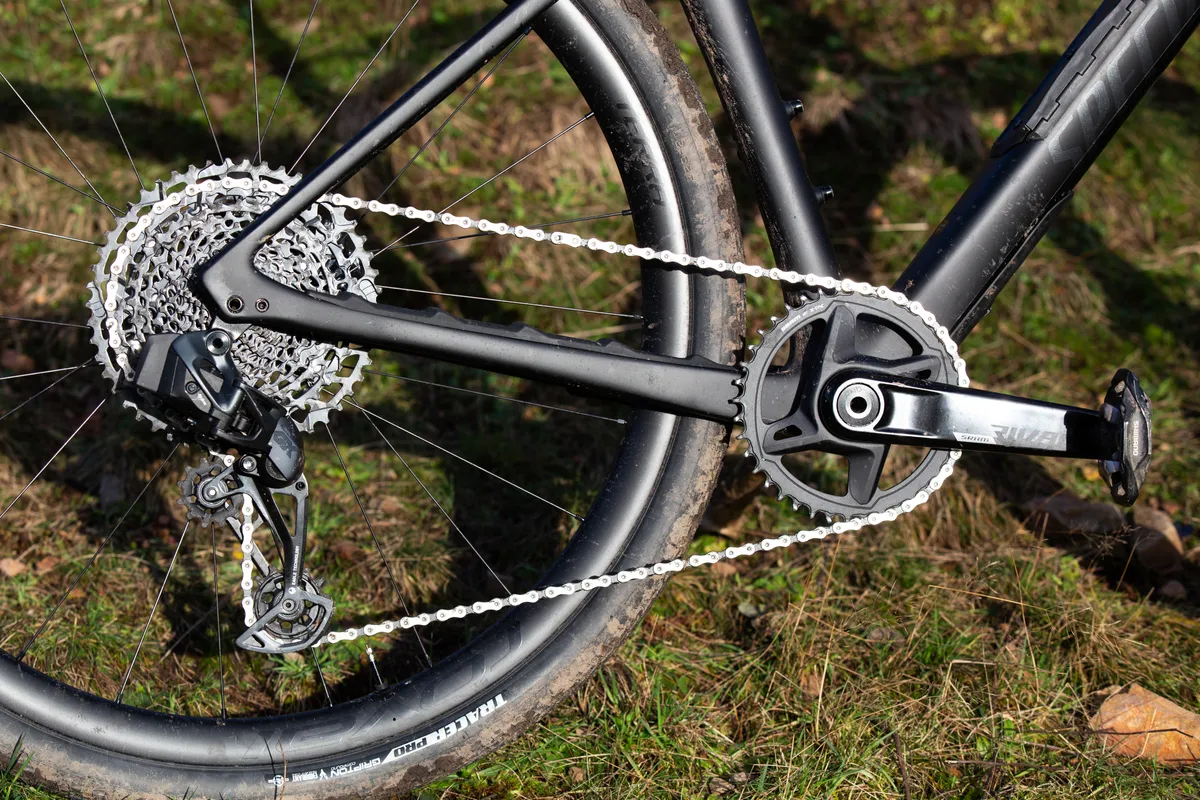
The Specialized Diverge STR Expert is the base model in the Diverge STR range.
For that, you get a Roval carbon wheelset, an alloy cockpit, a carbon seatpost and a mullet drivetrain. This pairs a SRAM Rival eTap AXS 1x crankset and shifters, with a SRAM GX Eagle mountain bike rear derailleur and a 12-speed, 11-50t cassette.
Involved setup

Before we get onto ride quality, it’s worth discussing the setup of the Diverge.
Every stock Diverge STR includes two frame posts to suit a range of rider weights. Nine different frame posts are available.
Each frame post features a directional layup, offering differing levels of compliance as you turn the frame post in 90-degree increments.
This results in 18 different stiffness settings, with a quoted rider weight range of 44kg to 122kg. The weight range for the frame posts supplied with each bike differs depending on frame size.
All frame posts are available to buy from Specialized if you fall outside the stock options – for example, if you are very tall but light, you may wish to purchase a post with a lighter ‘tune’. Pricing and availability for supplementary frame posts is yet to be confirmed, though.
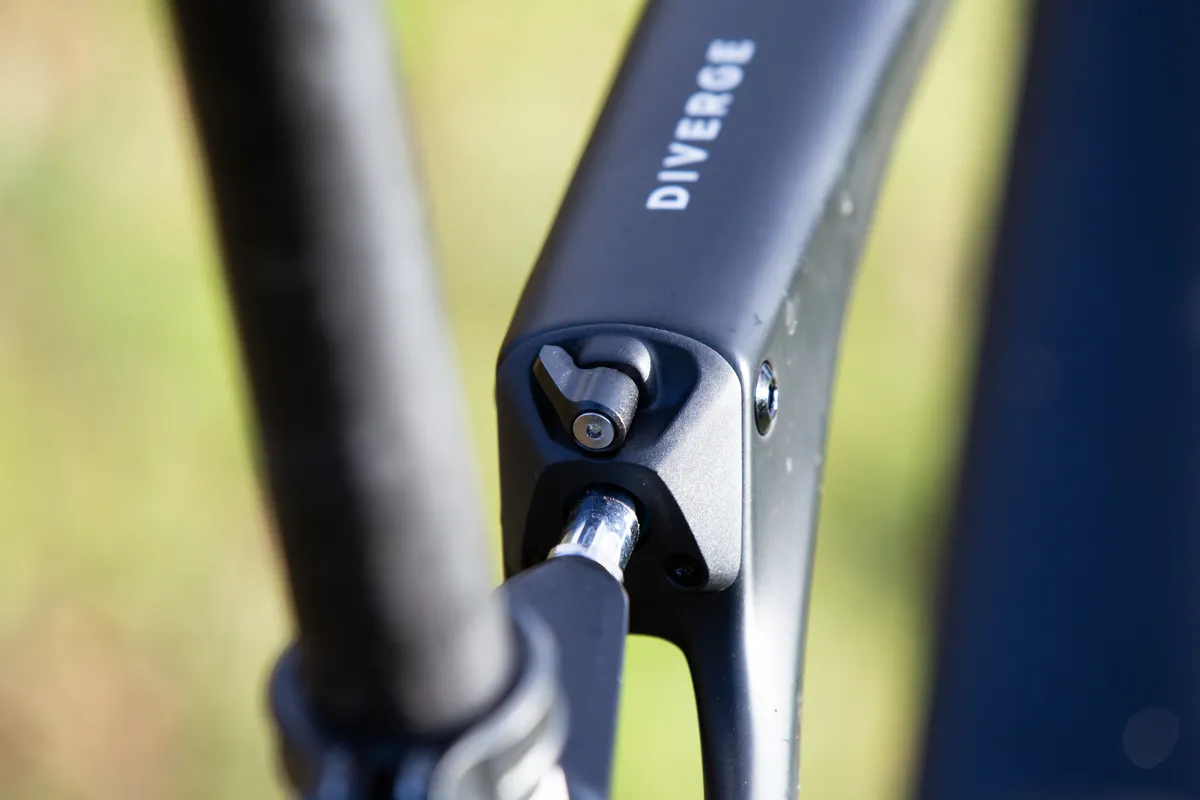
The frame post is connected to a hydraulic damper integrated into the bike's top tube via an aluminium strut (Specialized calls it a ‘tendon’). This damper tempers the movement of the STR system.
The same damper is used across all frame sizes but rebound speed can be adjusted using a hex key.
The system also offers three compression settings that will be familiar to any mountain biker – open, firm and locked out. These can be selected on the fly via a lever just above the strut.
The lever is small and unobtrusive but is a little bit fiddly to adjust if wearing thick gloves. This isn’t a deal breaker, though.
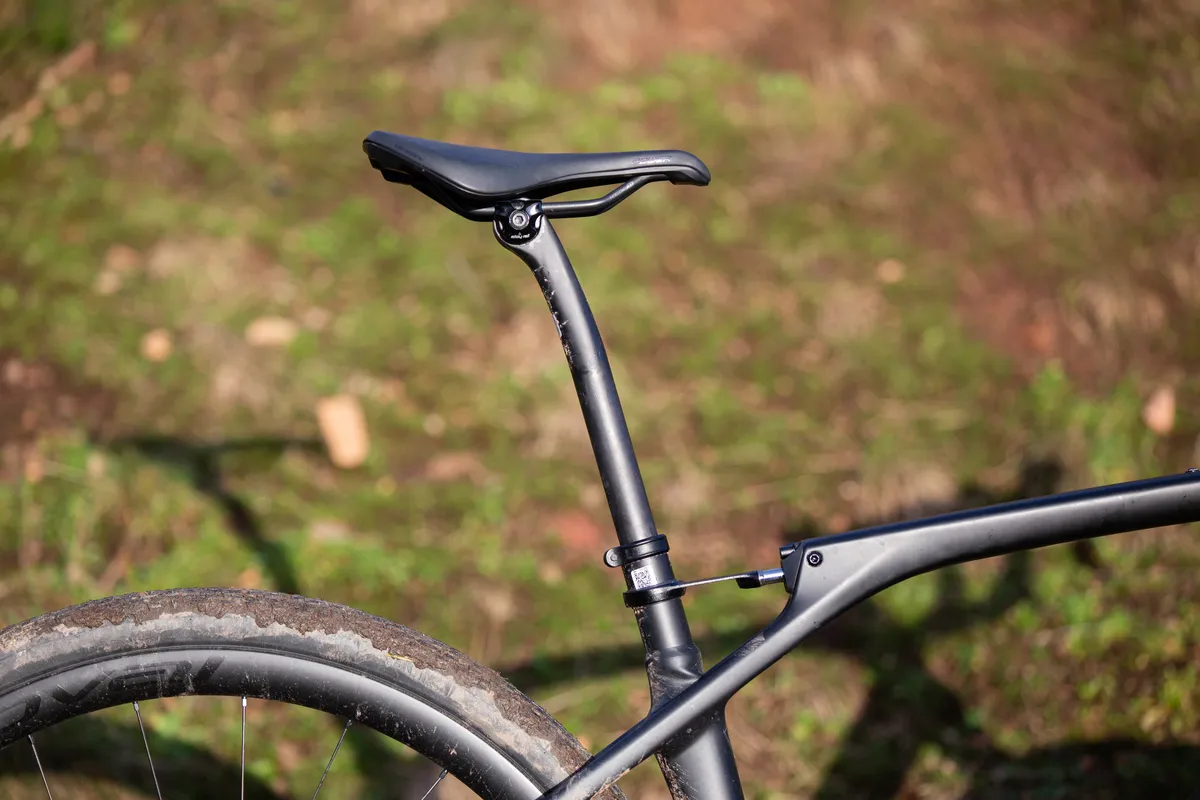
Specialized says weight and preference largely dictate how you set up Future Shock Rear.
While this is a good starting point, I found fit also has an unexpectedly large effect on how the system operates.
All sizes of the Diverge STR ship with a 20mm-setback seatpost. With the saddle clamped on the middle of the rails, the STR system felt very active.
Pushing the saddle forward to suit my bike fit greatly reduced how active the system felt. Swapping the stock post to an inline post would have the same effect.
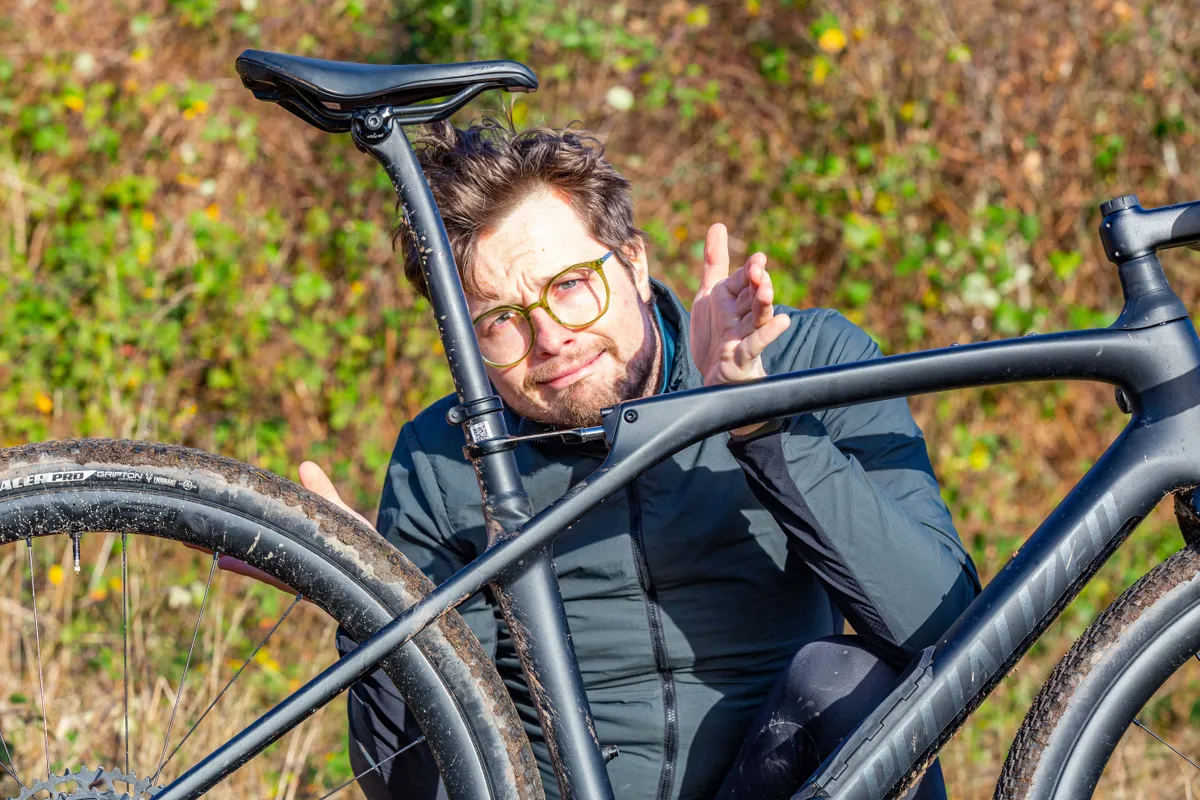
It’s also worth mentioning that the sag of the system (how much it moves when weighted) also slackens the effective seat tube angle of the bike. This impacts fit further.
None of this takes into account the possibility of fitting bikepacking bags to the seatpost, which could further impact the performance system.
Swapping to a different frame post or changing its orientation should get you back to your desired ride feel, but the setup process isn’t quite as simple as Specialized claims – though hardly onerous, you shouldn’t expect to set and forget on your first ride.
Specialized Diverge STR ride impressions
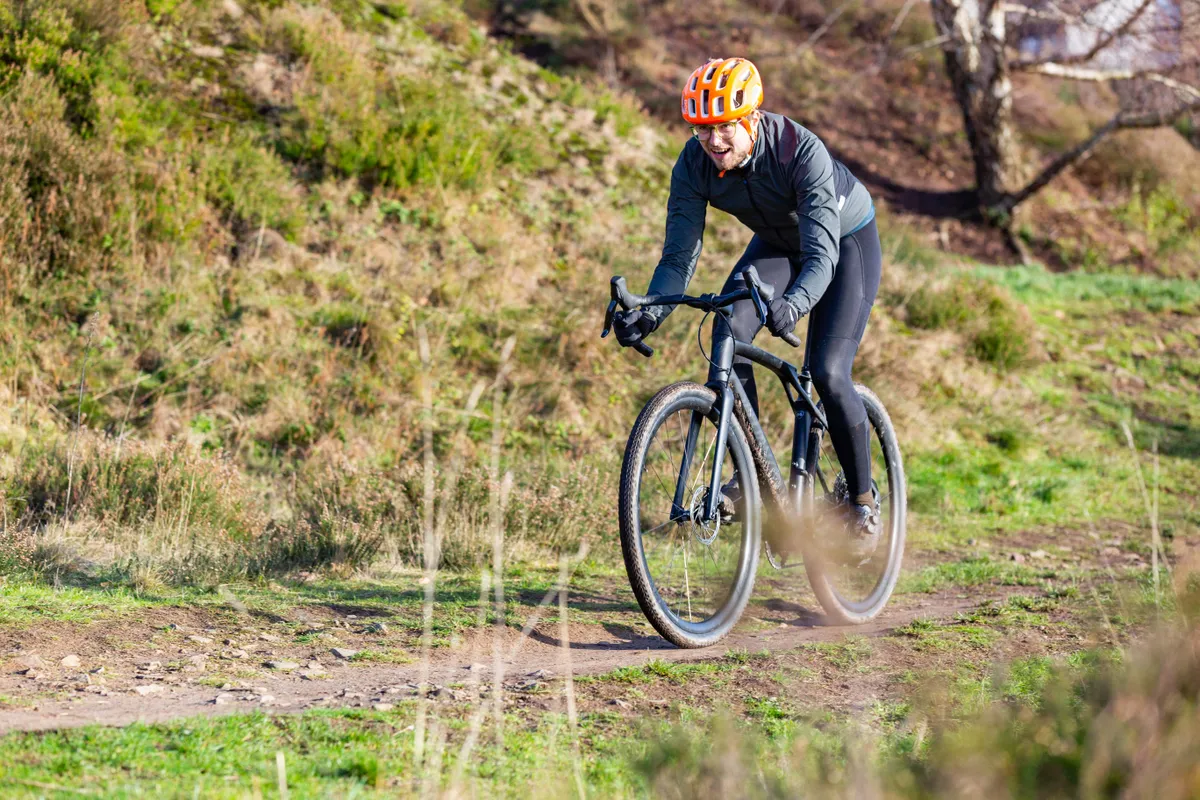
However, once dialled in, the system is luxuriously smooth.
The Future Shock Rear is far more sensitive to small bumps than a conventional rear suspension system found on most mountain bikes.
This is due to the fact that because it's essentially a big ol’ bendy tube, it's subject to far less stiction.
Stiction is the amount of static friction the system must overcome before it operates.
This effect is most noticeable when pedalling seated on fast and chattery fire roads.
Where large bumps would disrupt pedalling rhythm or buck you off course – not the bike, that’s an important distinction – the Diverge STR feels more controlled.
This aligns with Specialized’s key claim around the system – with a bit of squish for your peach, a rider should be able to remain seated for longer on rough terrain, which is more efficient.
Unlike conventional suspension seatposts, such as the Redshift ShockStop or Cane Creek eeSilk, which typically move vertically, the STR system moves in an arc around the bottom bracket. This means your saddle height does not change as the system works.
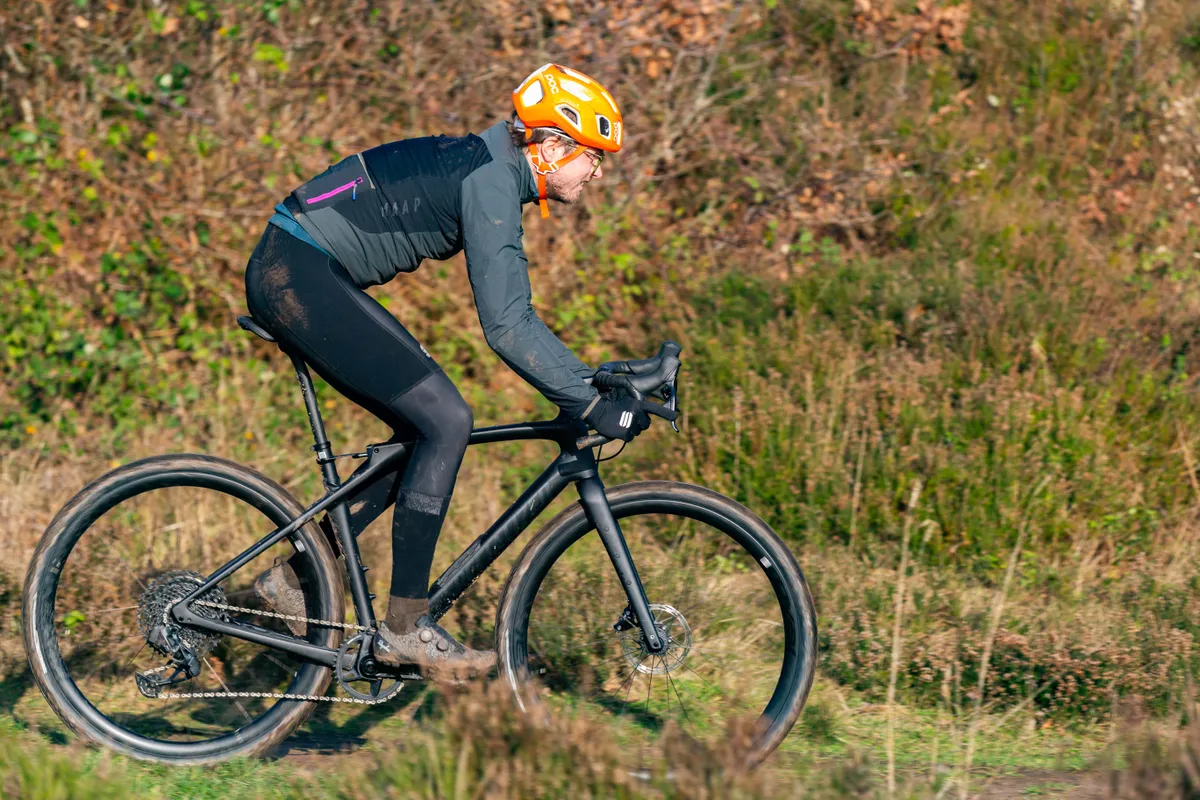
However, when pedalling seated, the effective reach from the saddle to the bars changes a small but perceptible amount as the system flexes back and forth.
This will either be forgotten about quickly or you will find it quite distracting depending on how sensitive you are to such things. I fall into the latter category and found the sensation a bit annoying, particularly when climbing.
While very effective when clattering along on flatter surfaces or when climbing, Future Shock Rear is less useful when descending.
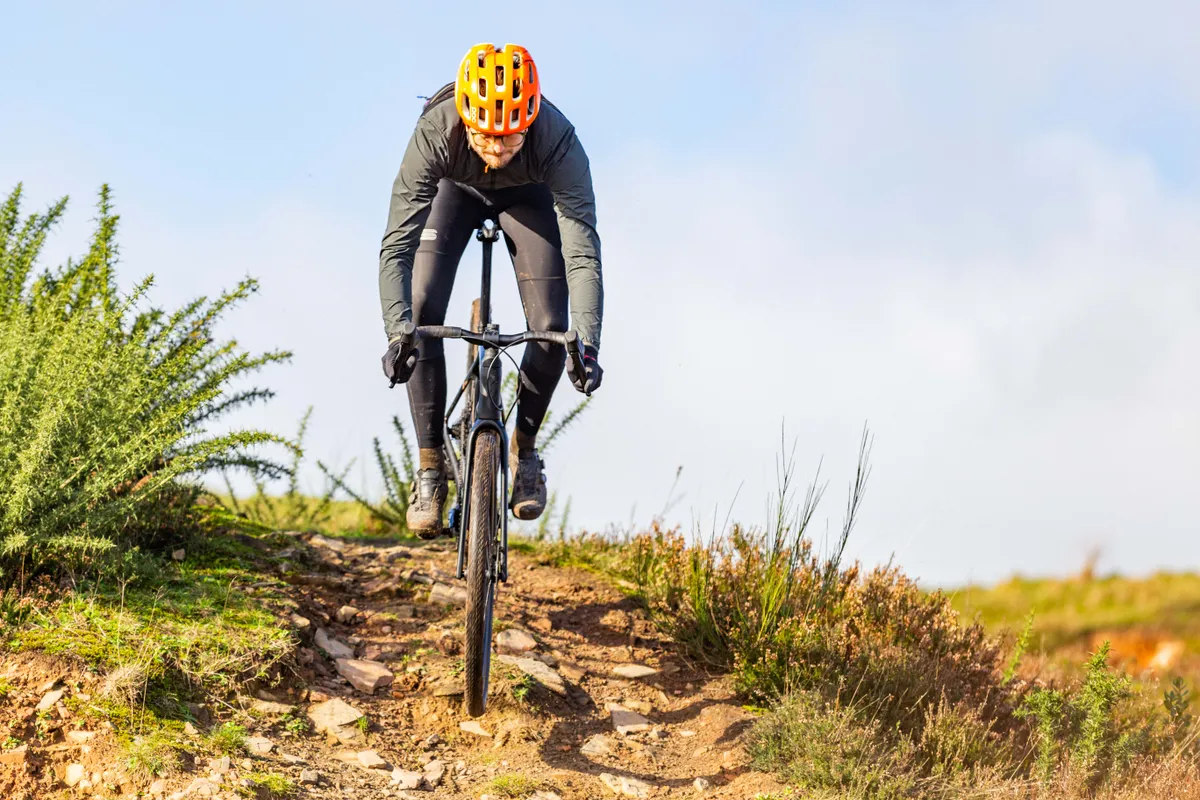
It’s important to remember the system is not ‘suspension’ in the strictest sense of the word. Future Shock Rear only suspends the rider, not the bike, so it doesn't help improve control when you’re standing.
On less technical descents, the system should improve comfort and control if you stay seated. However, I found it impossible to retrain the dormant downhill shredder part of my brain, and overcome the urge to stand up when descending off-road.
The front Future Shock is as effective as ever, but you shouldn’t expect the Diverge STR to be an extraordinary descending demon.
Something such as the BMC URS LT or Cannondale Topstone is the bike for you if that’s what you’re after (or, you know, a mountain bike). Both offer a ‘true’ suspension setup and geometry better suited to gnarly descents.
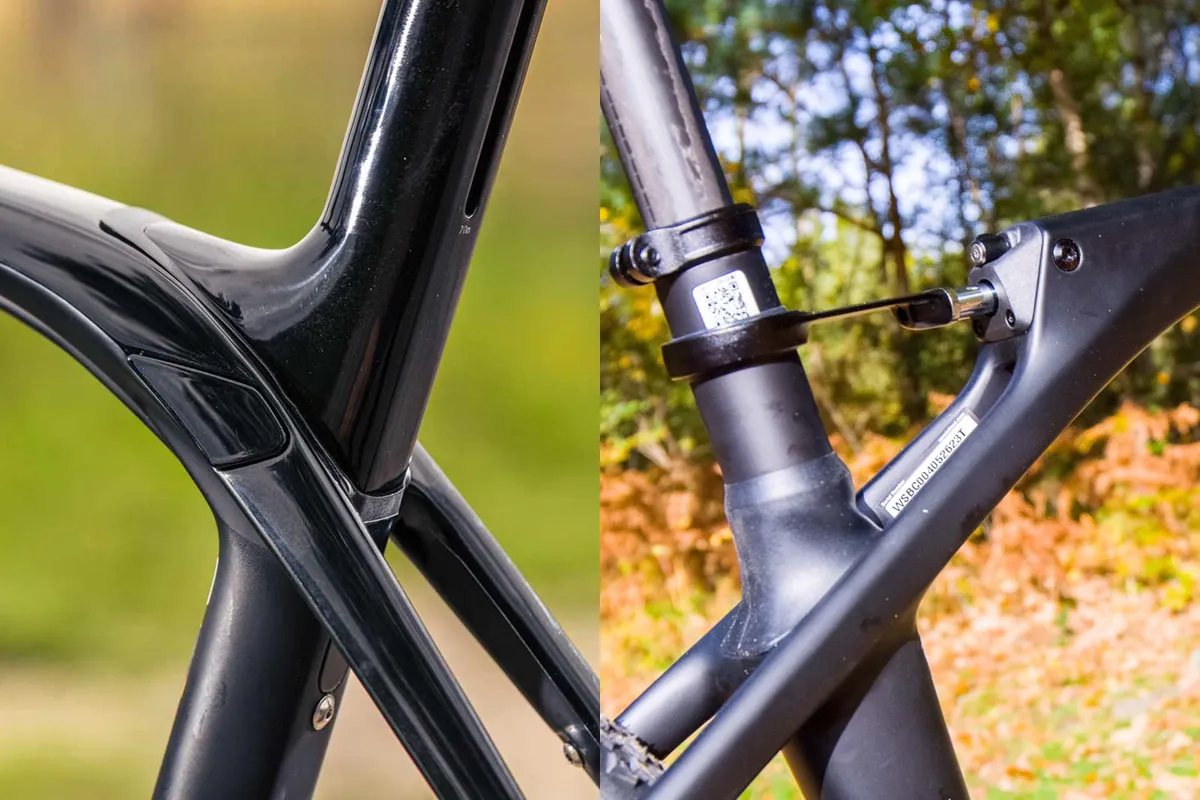
On the subject of comparisons, it bears briefly talking about Trek’s IsoSpeed decoupler.
This separates the top and seat tubes at the seat cluster, allowing the latter to flex around a pivot. I have ridden both systems and they’re not really comparable.
IsoSpeed is effective in a different way, taking the sting out of bumps and vibrations, but it doesn’t really react in a noticeable way to big hits.
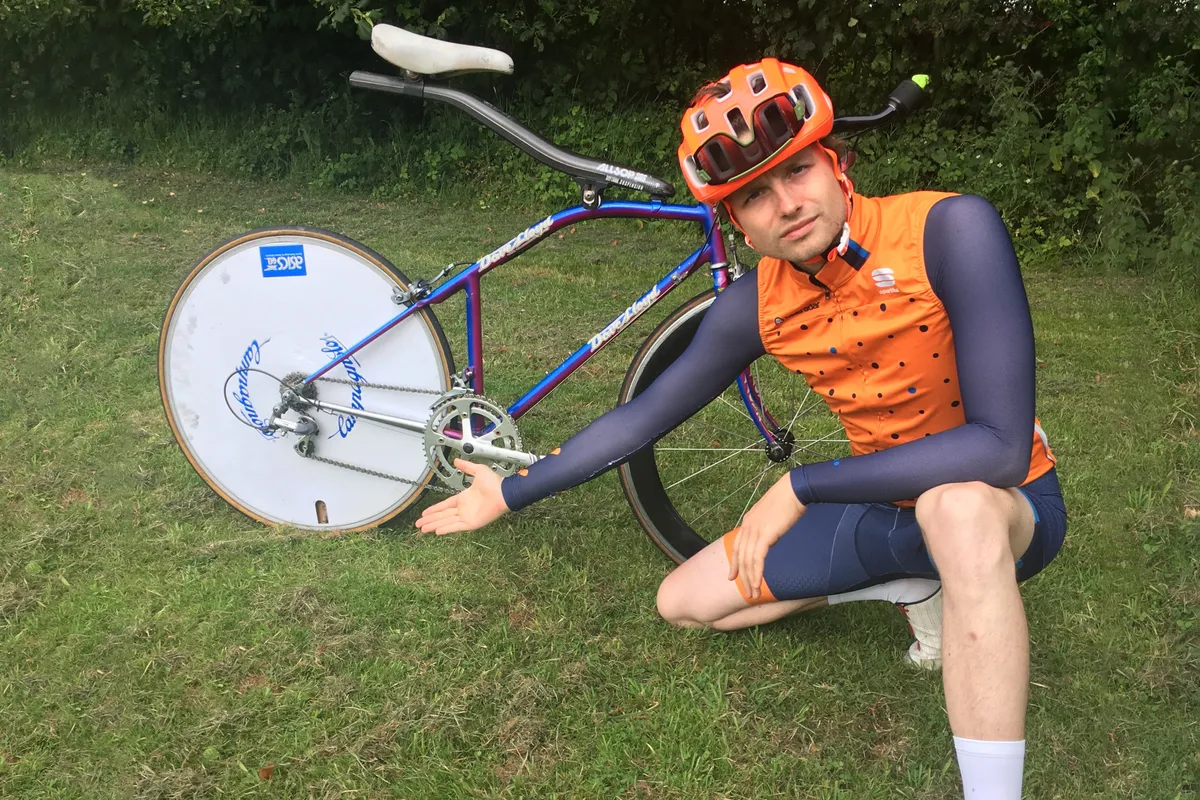
Though Specialized will curse me for drawing this comparison, the closest-feeling equivalent system I have ridden would be the Softride Suspension System.
The Future Shock Rear feels far more refined and doesn’t exhibit any unnerving side-to-side waggling, but it does offer a similar ‘always on’ floaty feel that isolates you from rough terrain.
Appealingly adaptable
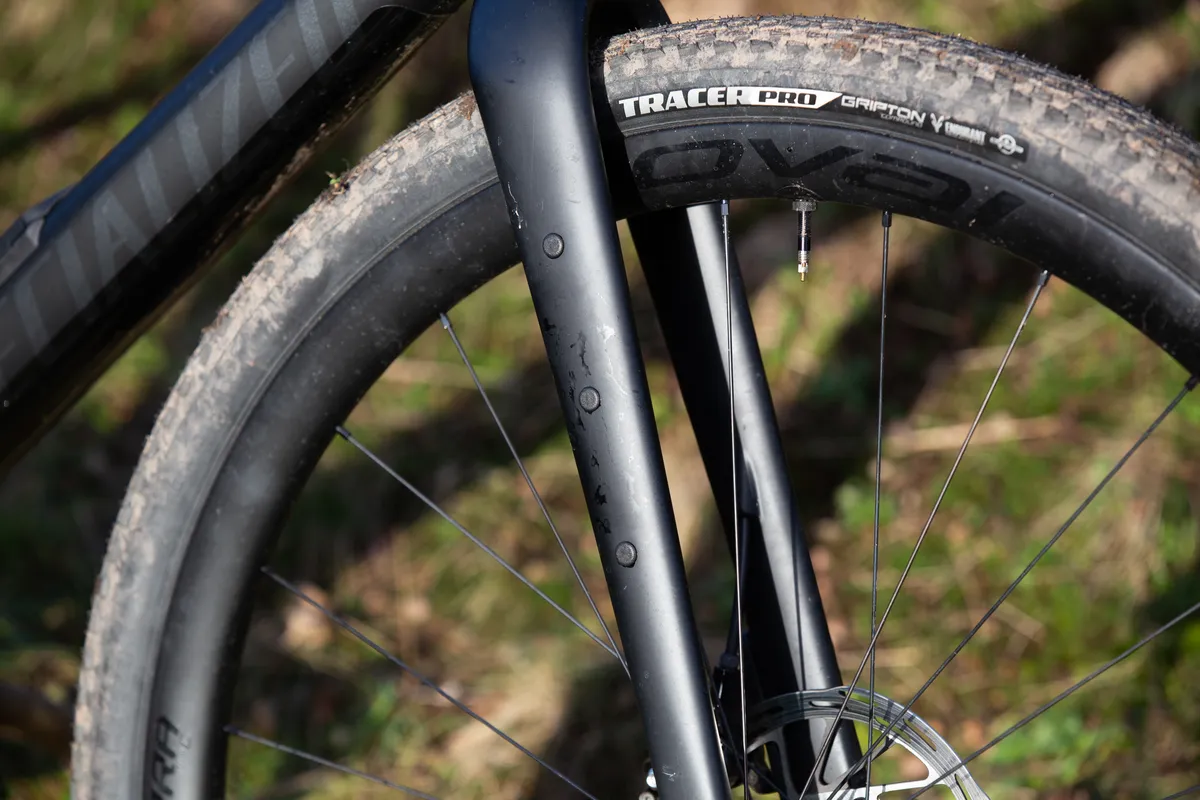
The Diverge STR retains the versatility that made the previous-generation bike so appealing.
With clearance for 650b tyres up to 2.1in wide and mounts for racks, mudguards and snack packs, you really could turn the bike to many tasks.
This level of versatility is absent from many mainstream gravel bikes, and Specialized deserves credit for including compatibility with things such as front pannier racks.
Other details such as the SWAT box storage chamber in the down tube further improve practicality.
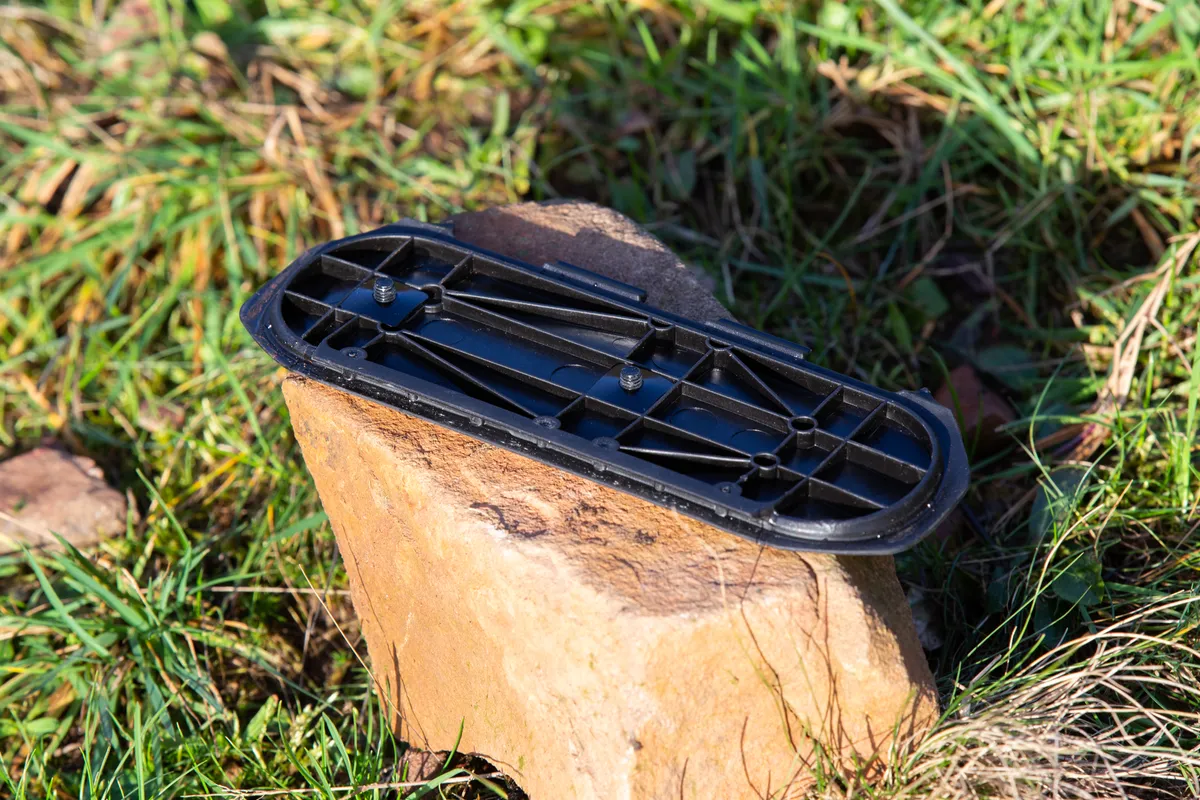
On that, I noted in my previous Diverge review that the needlessly long stock bottle cage bolts stuck proud of the SWAT box door. These would catch anything loose, such as a jacket, every time you removed it from the box.
Perhaps it’s just my ego, but I like to think someone at Spesh HQ read my review and acted because the bolts on the new Diverge STR are considerably shorter.
However, as before, the square nuts are not secured to the underside of the lid. This makes swapping cages really fiddly.
If this test bike were my own, I would preemptively secure these in place with a dab of superglue – I don’t like the idea of rooting around the bowels of the down tube trying to find an errant nut.
An acceptable but uncompetitive build
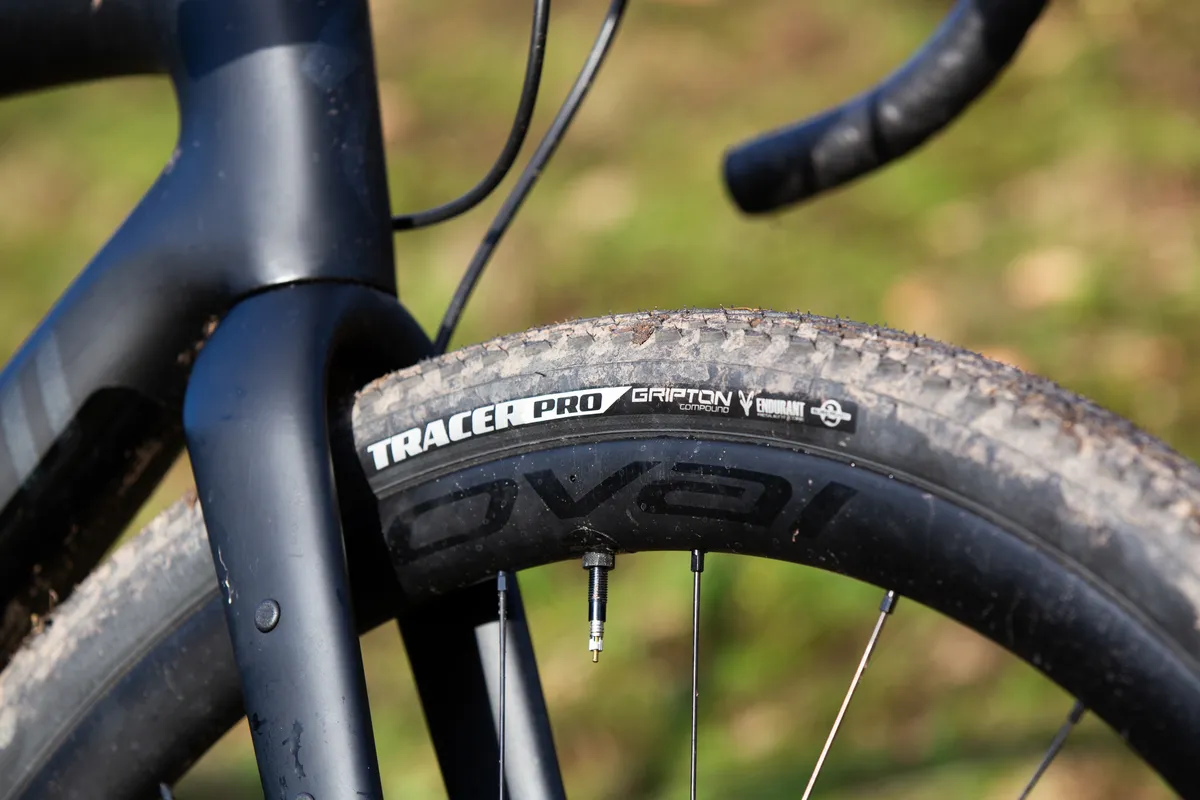
The previous-generation Diverge shipped with Specialized Pathfinder gravel tyres on all builds. These were hopeless in anything but bone-dry conditions, pairing a closely spaced tread on the outer edge with a fully slick central section.
Even in dry conditions, the tyres felt a bit weird on the road, squirming unnervingly as you transitioned from the slick centre section to the shoulder treads.
While unsuitable for muddy conditions, the Diverge STR’s 42mm wide Specialized Tracer Pro tyres provide much more predictable handling and improved grip in loose terrain.
Elsewhere, the build warrants no complaints from a performance perspective.
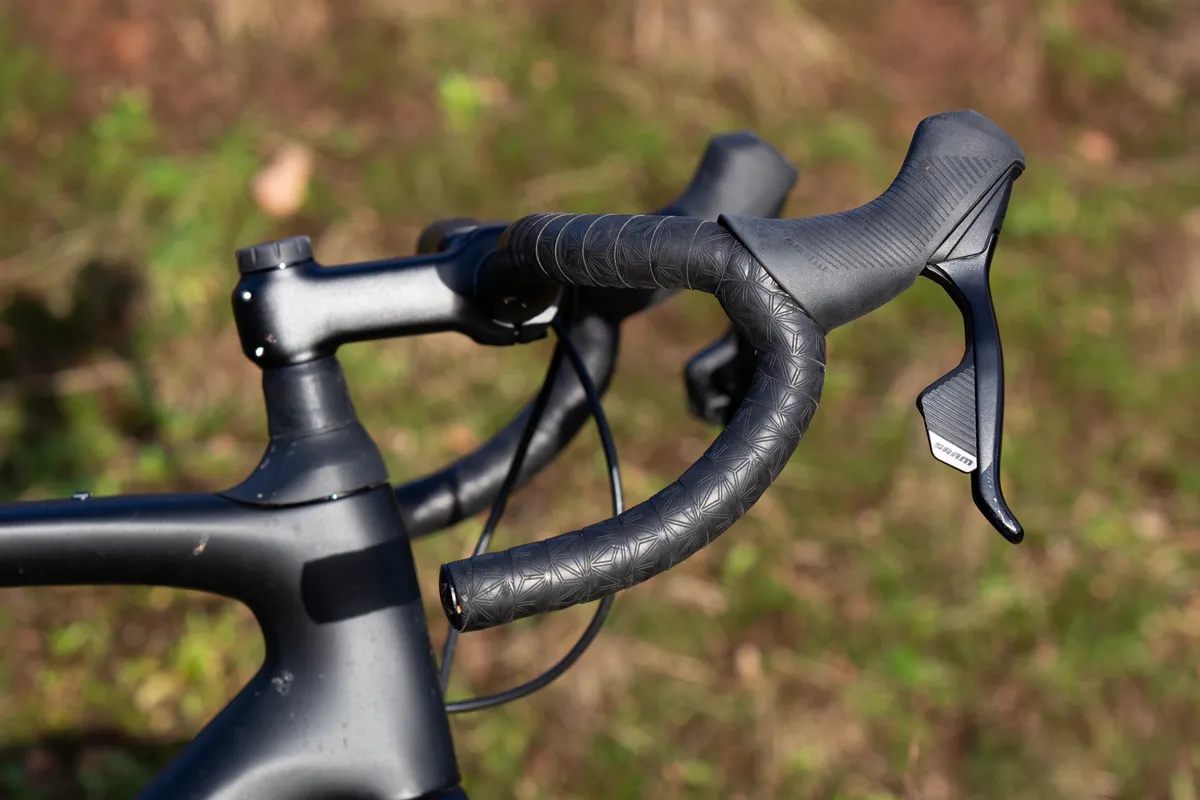
SRAM Rival eTap AXS offers crisp and reliable shifting and the 25mm-wide (internal) Roval Terra C wheels plump up tyres to a supportive profile.
However, from a pure brand hierarchy snobbery point of view, it stings a bit to get third-tier SRAM Rival and GX Eagle components on a £7,500 bike.
That’s a nominally middle-of-the-road groupset for what was, only a few years ago, top-end cash.
Now, I’m no bike brand apologist, but you must factor in the fact the frame is fairly complex, which may explain the less competitive build. Wireless shifting also pushes up the cost of the bike.
Specialized is also hardly alone here – a similar, Rival-equipped Trek Checkpoint SLR would set you back only £100 less at £7,400.
Clearly, this is not a bike that's intended to hit a competitive price point. For those seeking nominative value for money, shop elsewhere.
Proprietary worries
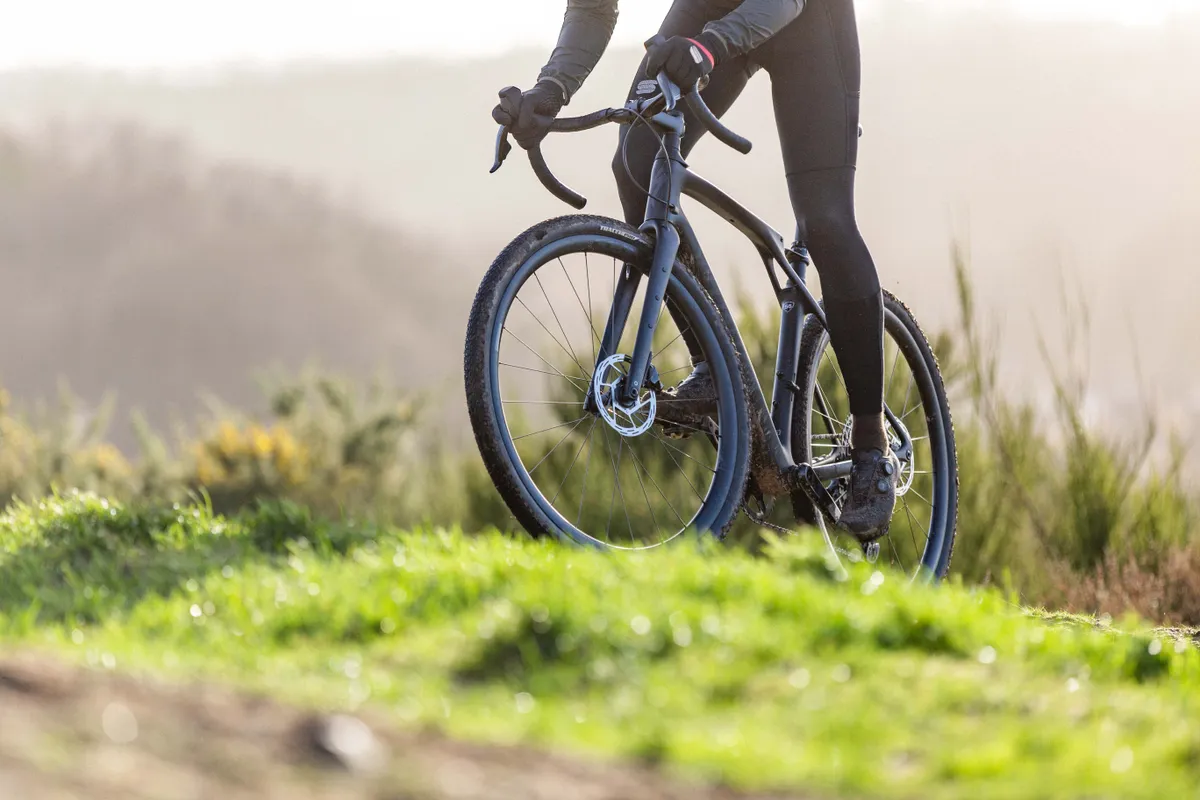
I’m an advocate for long-term repairability and the Diverge deserves a bit of scrutiny in this area.
The same point could be levelled at any bike that includes proprietary tech (which is just about all of them these days), but the uniqueness of the Diverge STR’s suspension system raised my eyebrows.
The damper is designed to be replaced fully and cannot be serviced, though a Specialized spokesperson stressed that "our intent was to make something that doesn’t need service and maintenance, rather than something that’s not serviceable".
But what happens if you need to buy a new damper years after the bike has been discontinued?
Specialized says it will supply service parts for "7 years after a bike is last sold, so you can generally think... the damper will be supported for another 10 years from now".
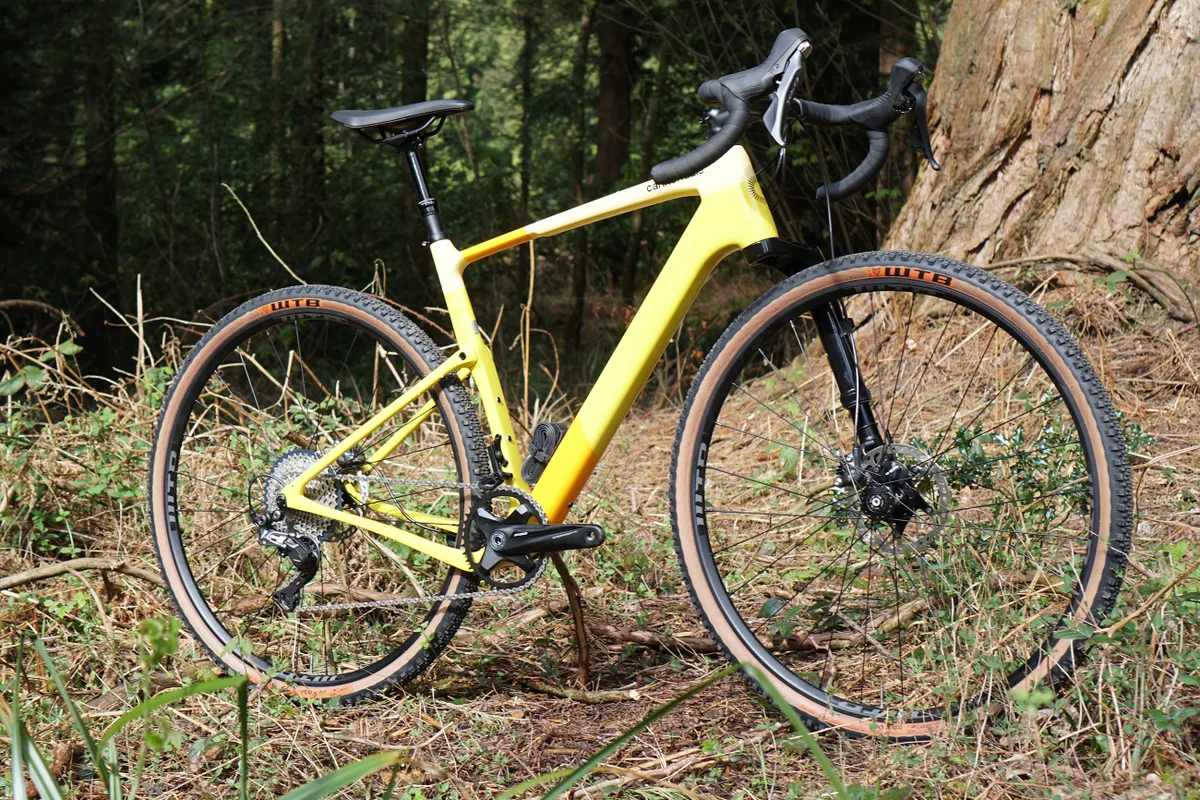
Does proprietary tech matter to you?Again, you could level the same point at the proprietary parts used on the Cannondale Topstones or Trek Checkpoints of this world.
Whether this matters to you depends on your attitude towards obsolescence, but it’s something that would weigh on my mind as a dedicated home tinkerer.
Specialized Diverge STR bottom line
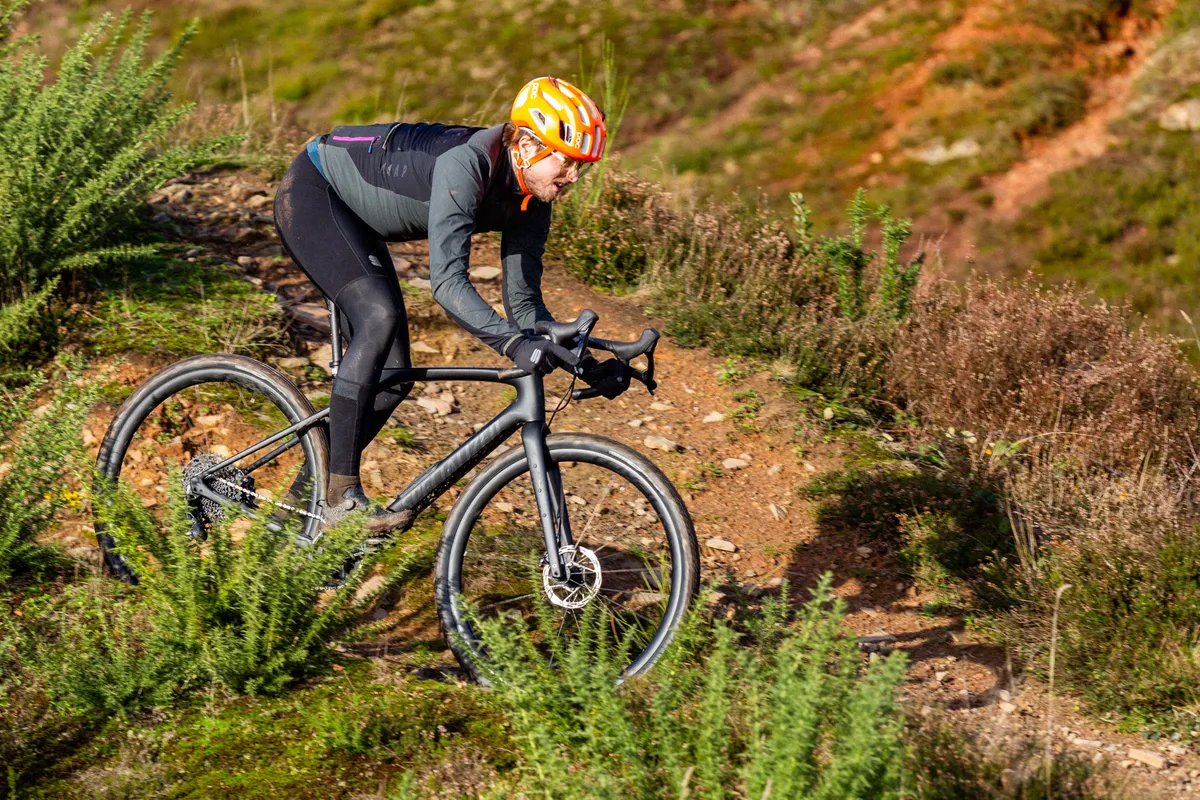
From initial mock horror at its challenging looks to a growing appreciation for what is a very effective bit of tech, I’ve changed my mind about the Diverge multiple times since it launched.
It’s quirky, Future Shock Rear works well (even if it is a bit fiddly to set up), and it retains all of the welcome versatility of the old Diverge.
However, the build isn’t mind-blowing for the cash and the system is only useful in certain circumstances.
Overall, the Diverge STR is very good at what it sets out to do, but it’s maybe a bit too fussy for my tastes. Sticking with Spesh, a bike such as the Crux really tickles my pickle, and that may be the case for many riders.
However, if you like your bikes to be at the cutting edge of performance, favour a cushy ride off-road and can get over the spec for the cash, you’ll love the Diverge STR.
Product
| Brand | Specialized |
| Price | €7550.00, £7500.00, $7500.00 |
| Weight | 9.86kg |
Features
| Stem | Specialized Future Stem |
| Chain | SRAM GX Eagle |
| Tyres | Specialized Tracer Pro 2BR |
| Brakes | SRAM Rival eTAP AXS, hydraulic disc |
| Cranks | SRAM Rival 1 Wide |
| Saddle | Specialized Body Geometry Power Expert |
| Wheels | Roval Terra C |
| Shifter | SRAM Rival eTap |
| Cassette | SRAM NX Eagle PG-1230 11-50t |
| Seatpost | Specialized S-Works Carbon Seat Post |
| Grips/tape | Supacaz Super Sticky Kush |
| Handlebar | Specialized Adventure Gear Hover |
| Bottom bracket | SRAM DUB BSA 68 |
| Available sizes | 49, 52, 54, 56, 58, 61cm |
| Rear derailleur | SRAM GX Eagle AXS |
